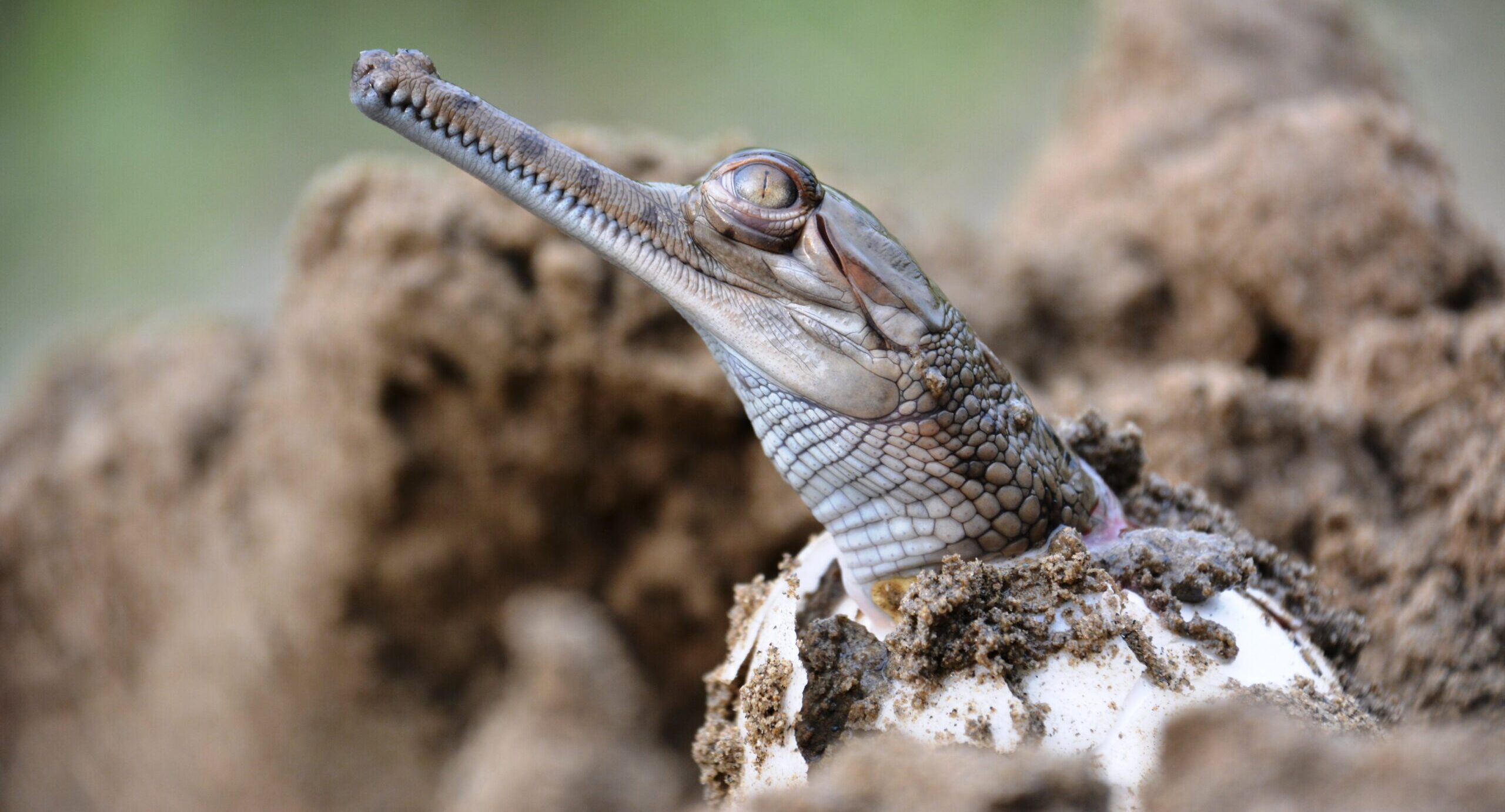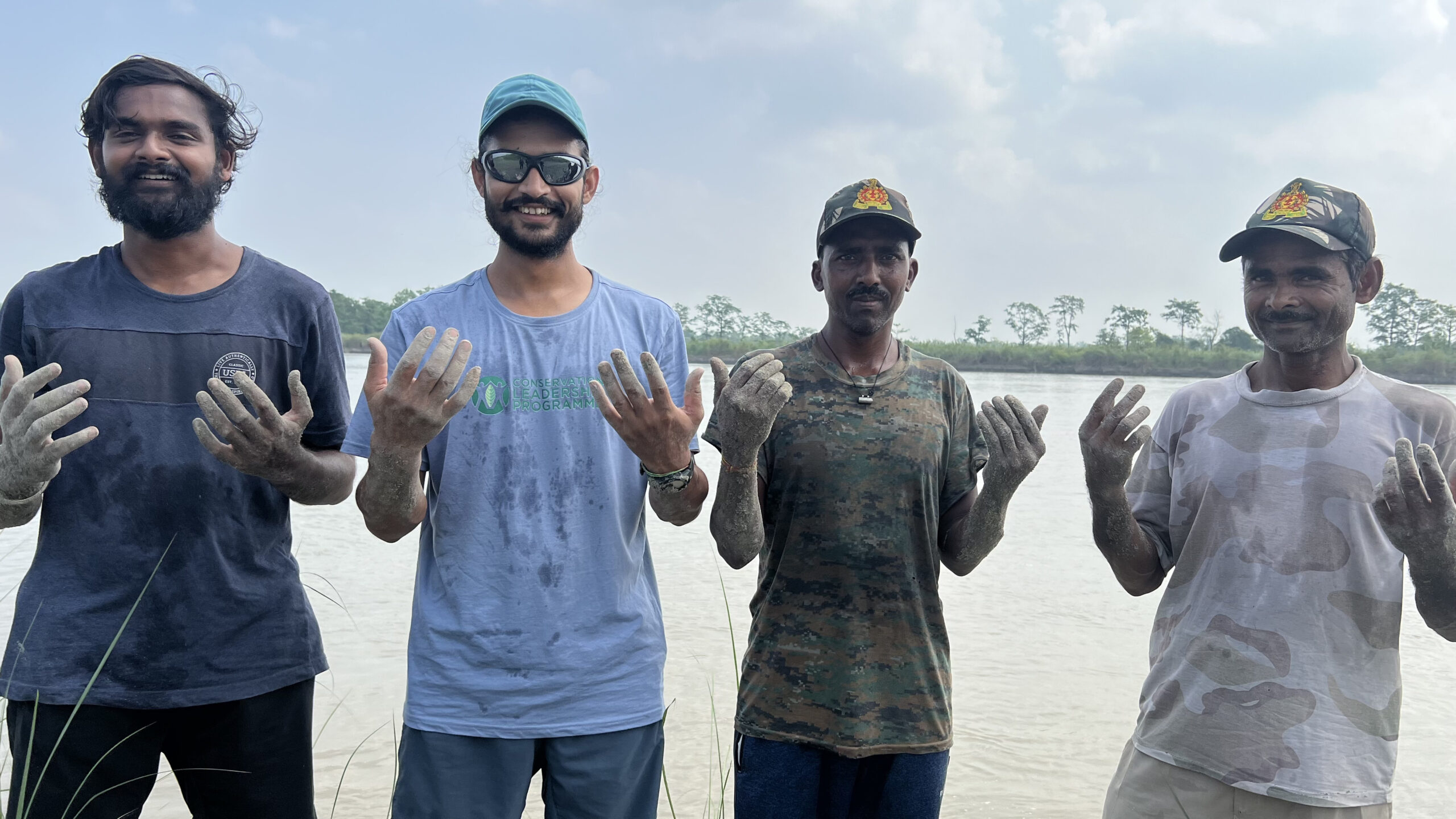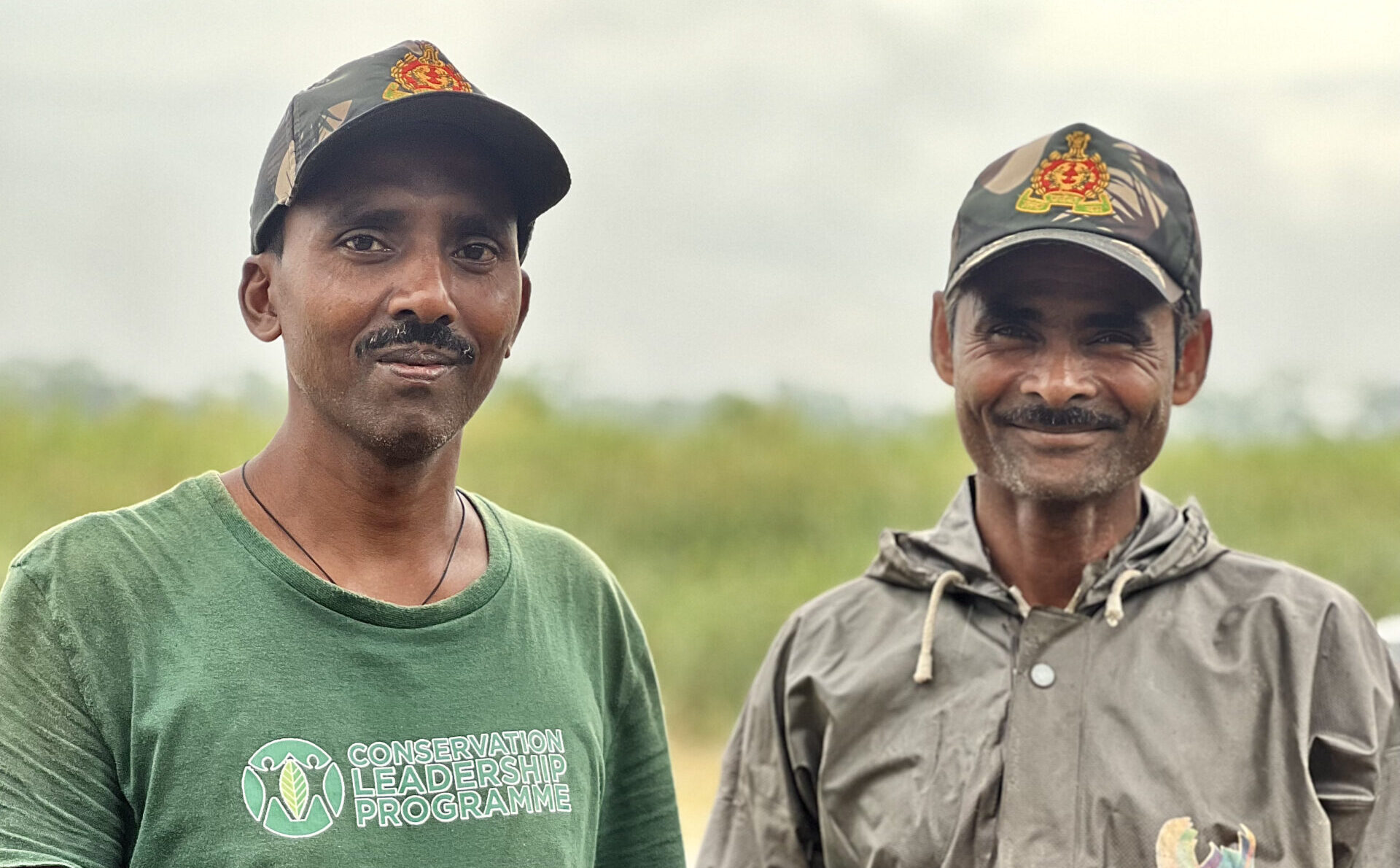A team of conservationists supported by the Conservation Leadership Programme (CLP) has recently published new findings confirming a gharial stronghold in a little-studied, unprotected area of northern India.

The new findings, published last month (December 2023) in Oryx – The International Journal of Conservation, have generated both positive news and calls for improved conservation management of the gharial in India.
The gharial is a critically endangered freshwater crocodile endemic to the Indian subcontinent. The species is facing a perilous future as its habitat is being lost due to the effects of damming and reduced water flow.
In 2022, lead author Gaurav Vashistha and his team received a CLP Future Conservationist Award to support their work to conserve the second-largest wild breeding gharial population found along the Girwa River in Katerniaghat Wildlife Sanctuary, northern India.
This population is isolated to a meagre 20km stretch of this river due to damming by the Girijapuri barrage over a period of nearly five decades. In particular, the population is threatened by the loss of suitable breeding habitats and low juvenile recruitment (i.e., fewer juveniles are being added to the overall population than expected).
Searching for gharials in the unprotected Ghaghara River
One key aim of the CLP project was to look for gharials downstream in the Ghaghara River, where it was previously thought the species had disappeared after the construction of the barrage. As an unprotected area, few monitoring surveys had been conducted and so very little was known about the gharials living here.

As part of the study, Gaurav was interested in exploring a theory that could explain the low juvenile recruitment in Katerniaghat Wildlife Sanctuary. This had always been a bit of a mystery given the area’s protected status.
Were the hatchlings being flushed downstream, into the Ghaghara River, when the barrage gate was opened during monsoon floods?
Over two days in February 2023, using a wooden ferry boat, the team surveyed a 100-kilometre stretch of the Ghaghara River, starting from the Girijapuri Barrage in Katerniaghat Wildlife Sanctuary downstream to Chahlari Ghat. During the survey, they recorded any gharials spotted and estimated their size to categorise life stage (yearling, juvenile, subadult or adult).
Survey results confirm gharial stronghold
Overall, the team observed 84 gharials at 29 locations. The majority (45%) were juveniles. All eight of the adults seen were females, and three of these had bulging abdomens, which the team suggest could indicate pregnancy and the possibility that gharials are breeding in this region.
By combining this data with previous gharial surveys in the Ghaghara River, the team calculated a total population of 258 – nearly four times higher than in the Girwa River upstream in Katerniaghat Wildlife Sanctuary.
This appears to confirm Gaurav’s theory that hatchlings disperse downstream when the barrage is opened and are recruited into the Ghaghara River population, which potentially explains the low juvenile recruitment in the Girwa River upstream.

Securing the gharial’s precarious existence
While this is positive news for the gharials in this region, more needs to be done to conserve them. In the protected area of Katerniaghat, Gaurav’s previous research has shown that nesting habitats are being degraded by reduced river flow and the growth of vegetation, although the creation of artificial sandbanks is improving nesting and hatching success.
However, in the unprotected area of the Ghaghara River, there is no ongoing monitoring or conservation of gharials. Here, they are threatened by flow regulation by two barrages, and agricultural use of riverbanks and fishing by local communities (although these latter threats are not extensive enough to cause direct harm to gharials).
The team therefore recommends involving government agencies and local communities living along the river in the conservation of both the protected and unprotected areas. Such a programme will need to mitigate the threats facing gharials and establish long-term monitoring protocols.
Feeling inspired?
Since 1985, CLP has directed funding, training and other support to approximately 3,100 early-career conservationists around the world who are leading vital action on the ground to save threatened species. Through our annual Team Awards, we direct this support to priority projects that generate conservation impact at the grassroots level and beyond.
To learn more:
- Read more about CLP’s alumni: incredible conservationists leading groundbreaking work on the ground.
- Learn about our conservation award funding if you would like to be a part of future training and support.
- Sign up to our newsletter to get our latest news sent straight to your inbox, including alumni updates and funding opportunities.
- Interested in supporting the Conservation Leadership Programme? We would love to hear from you.




